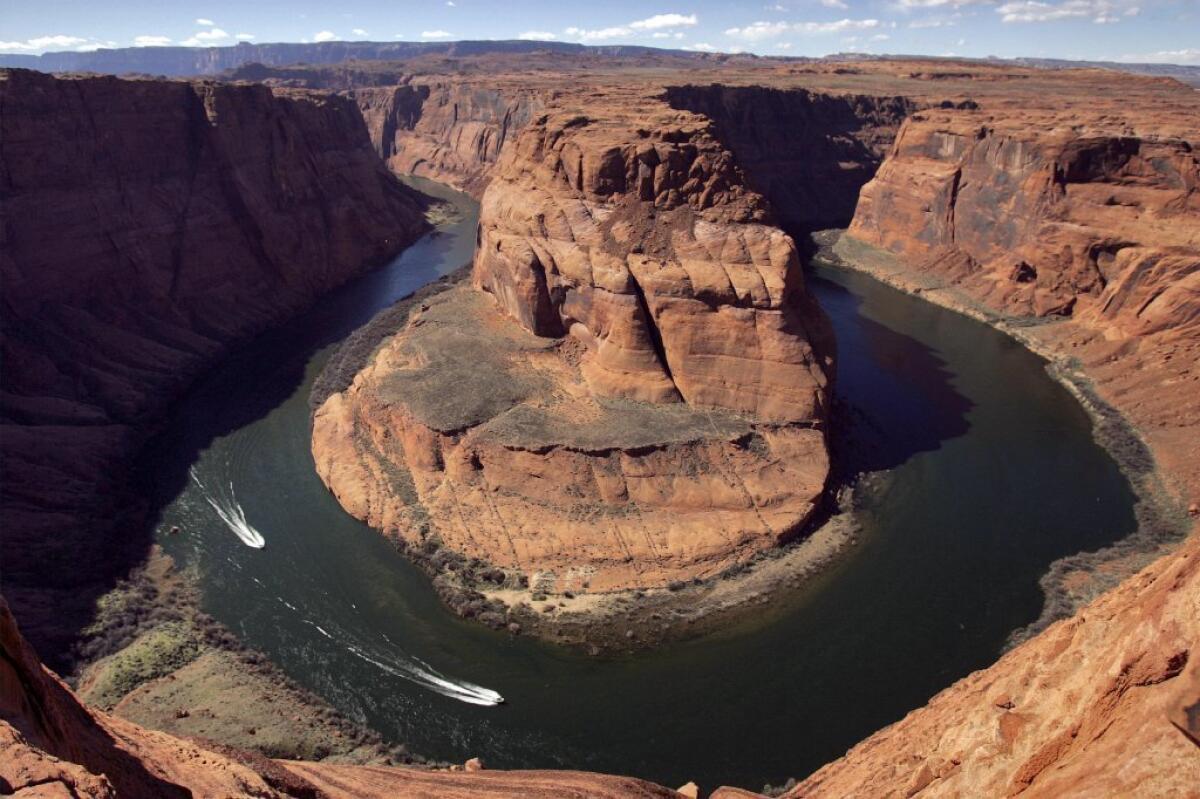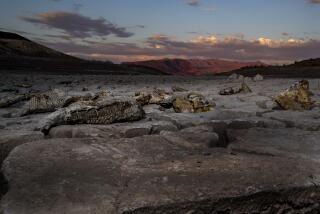The drying of the West

John Wesley Powell, whose legendary descent of the Colorado River in 1869 brought the one-armed explorer fame and celebrity, worried about America’s westward migration. The defining characteristic of Western lands was their aridity, he wrote, and settlement of the West would have to respect the limits aridity imposed.
He was half right.
The subsequent story of the West can indeed be read as an unending duel between society’s thirst and the dryness of the land, but in downtown Phoenix, Las Vegas or Los Angeles, you’d hardly know it.
By the late 20th century, Western Americans had created a miracle in the desert, successfully conjuring abundance from aridity. Thanks to reservoirs large and small, scores of dams including colossi like Hoover and Glen Canyon, more than 1,000 miles of aqueducts and countless pumps, siphons, tunnels and diversions, the West had been thoroughly re-rivered and re-engineered. It had acquired the plumbing system of a giant water-delivery machine, and in the process its liquid resources were stretched far beyond anything Powell might have imagined.
Today the Colorado River, the most fully harnessed of the West’s great waterways, provides water to about 40 million people and irrigates nearly 5.5 million acres of farmland. It also touches 22 Indian reservations, seven National Wildlife Reservations and at least 15 units of the National Park System, including the Grand Canyon.
Until now, the ever-more-complex water delivery systems of the Colorado Basin have managed to meet the escalating needs of their users. This is true in part because the states of the Upper Basin (Colorado, Wyoming, Utah and New Mexico) were slower to develop than their downstream cousins. Under the Colorado River Compact of 1922, the Upper and Lower Basins divided the river, with the Upper Basin assuring the Lower of an average of 7.5 million acre-feet of water per year delivered to Lees Ferry, Ariz., the dividing point between the two. The Upper Basin would use the rest. Until recently, however, it left a large share of its water in the river, which California, and secondarily Arizona and Nevada, happily put to use.
Those days are gone. The Lower Basin states now get only their annual entitlement and no more. Unfortunately for them, it’s not enough, and never will be. Currently, the Lower Basin lives beyond its means — to the tune of about 1.3 million acre-feet per year, essentially consuming 117% of its allocation.
This deficit is “funded,” for now, by drawing on the accumulated water surplus held in the nation’s largest reservoir, Lake Mead, impounded behind Hoover Dam. Unfortunately, with the Lower Basin using more water than it receives, the surplus there can’t last. In November 2010, the level of the lake fell to its lowest elevation ever: 1,082 feet above sea level, a foot lower than its previous nadir during the fierce drought of the 1950s.
Had the dry weather held — and increasing doses of such weather are forecast for the region — the reservoir would have soon fallen another 7 feet and triggered mandatory (but inadequate) cutbacks in water delivery to the Lower Basin states. Instead, heavy snowfall in the Northern Rockies that winter bailed out the system by producing a mighty runoff, lifting the reservoir a whopping 52 feet.
Since then, however, weather throughout the Colorado Basin has been relentlessly dry and the lake has resumed its precipitous fall. It now stands at 1,106 feet, which translates to roughly 47% of capacity. Lake Powell, Mead’s alter ego, is in about the same condition.
Another dry year or two and the Colorado system will be back where it was in 2010, staring down a crisis.
One recent study forecasts that, under a changing climate, the yield of the Colorado will decline 10% by about 2030, and it will keep falling after that. Meanwhile, the U.S. Bureau of Reclamation expects the river’s 40 million water users to grow to between 49.3 million and 76.5 million by 2060.
None of the available remedies inspires much confidence. “Augmentation” — diverting water from another basin into the Colorado system — is politically, if not economically, infeasible. Desalination, which can be effective in specific, local situations, is too expensive and energy-consuming to slake much of the Southwest’s thirst. And weather modification, a.k.a. rainmaking, isn’t much more effective today than it was in its infancy during the last century.
Undoubtedly, there will be small successes squeezing water from unlikely sources. But the surest prospect for the West? That a bumper harvest of lawsuits is approaching. Water lawyers can expect decades of full employment in the region. Their clients will include irrigation farmers, thirsty cities and power companies that need water to cool their thermal generators and for hydroelectric production. Recreation interests and environmentalists trying to save endangered species will join them in the legal equivalent of a long-running, circular firing squad.
Powell was right about one thing: Aridity bats last.
William deBuys irrigates a small farm in northern New Mexico and is the author, most recently, of “A Great Aridness: Climate Change and the Future of the American Southwest.” A longer version of this piece appears at tomdispatch.com
More to Read
A cure for the common opinion
Get thought-provoking perspectives with our weekly newsletter.
You may occasionally receive promotional content from the Los Angeles Times.










